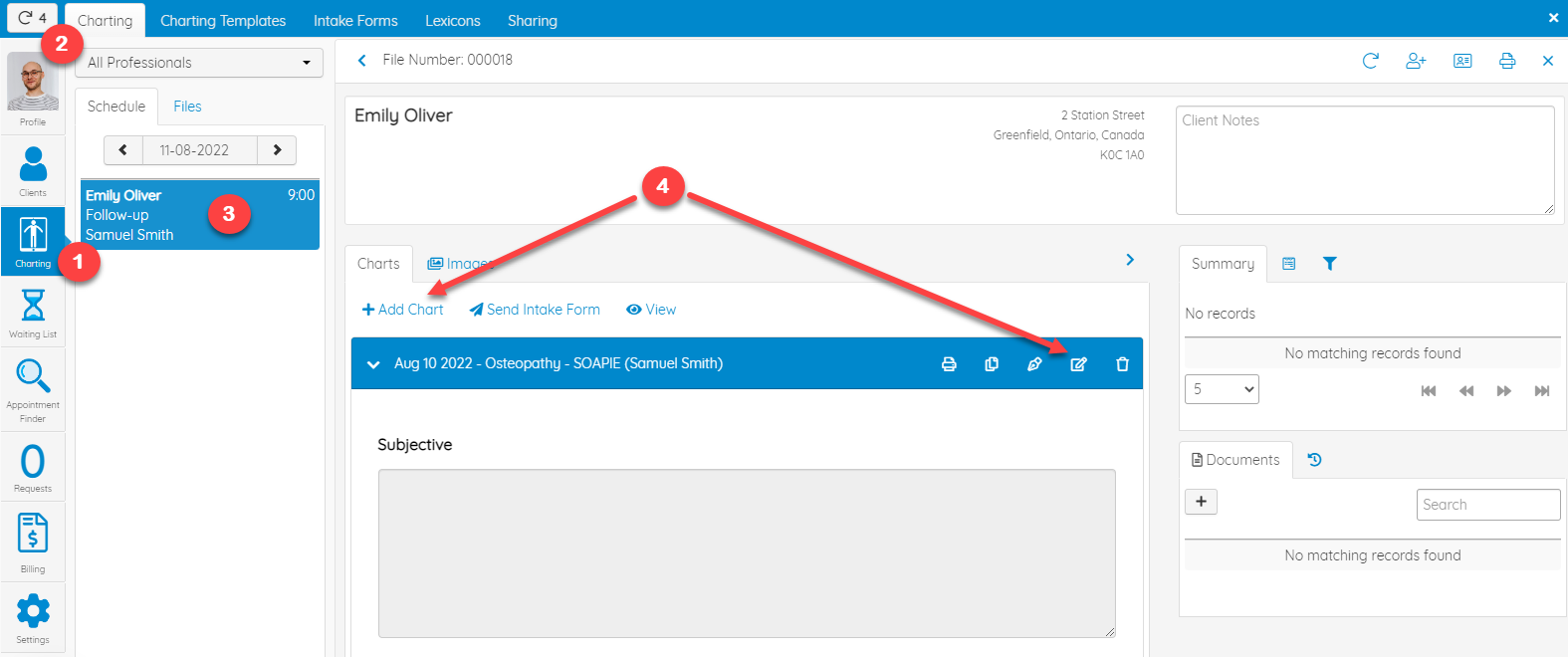How to Use Lexicons
Here is the procedure to follow to take full advantage of the functionality to create lexicons:
First, make sure you've linked your Charting templates to a lexicon, as shown below:
1. Click on Charting, in the left menu
2. Select Charting Templates from the top menu
3. Choose the template to which you want to add a lexicon and click on it 

4. Select the lexicon you want to use for this chart from the drop-down list. *No need to save, it will be done automatically! 😉 

Now here's how to access a client file to start taking your notes with the predictive writing and shortcuts:
1. Click on Charting in the left menu
2. Click on Charting in the top menu
3. Select or search for your customer
4. Click Add Chart to create a new chart or click on an existing chart to open it (then click on the pencil icon to edit it) 

Please note that some differences exist, depending on whether you are using a desktop computer or an electronic tablet:
On a desktop computer:
- You can see up to 9 symbols or words for predictive writing. The ideal is therefore to place the nine most common first
- With your mouse, you just have to click on the symbols or groups of words displayed on the screen

- Alternatively, you can also press alt + the number above the symbol or word to insert it. By performing this action, the latter will write itself. For example, clicking or pressing alt + 1 will write ∆

- By pressing alt + the number you can also display the group of words (in gray on the screen). For example, if you press alt + 9, the group of words related to MdC will be displayed. Thereafter, you just have to click on the desired word, or type alt + the desired number a second time. For example, if I want to write Bloathing, this time I will do alt + 3

- You can also write just the beginning of the word, then use the tab function on your keyboard to complete it. You just have to write one of your shortcuts, then press the tab key on your keyboard, in order to complete the information. For example, in the "Osteopathy - EN" lexicon, the shortcut HE is for High Eye/Ear


On a tablet:
- The virtual keyboard will expand in full screen mode to give you easy access to each key
- You can type hotkeys directly on the touch screen, which makes typing your notes super fast!
About Shortcuts:
- Be sure to take into account upper and lower case, which means that if your shortcut is written in all caps, you will not see the shortcut appear in your options if you write in lower case.
- Finally, when you start typing letters, our system also suggests the matching shortcuts. For example, if I write “h-e-a”, the system offers me the shortcuts starting with “hea”, i.e. "Head asymmetry", "Headache", "Heaviness Mobility" and "Heart"
To see the lexicons in action, you can watch this video 🎥




